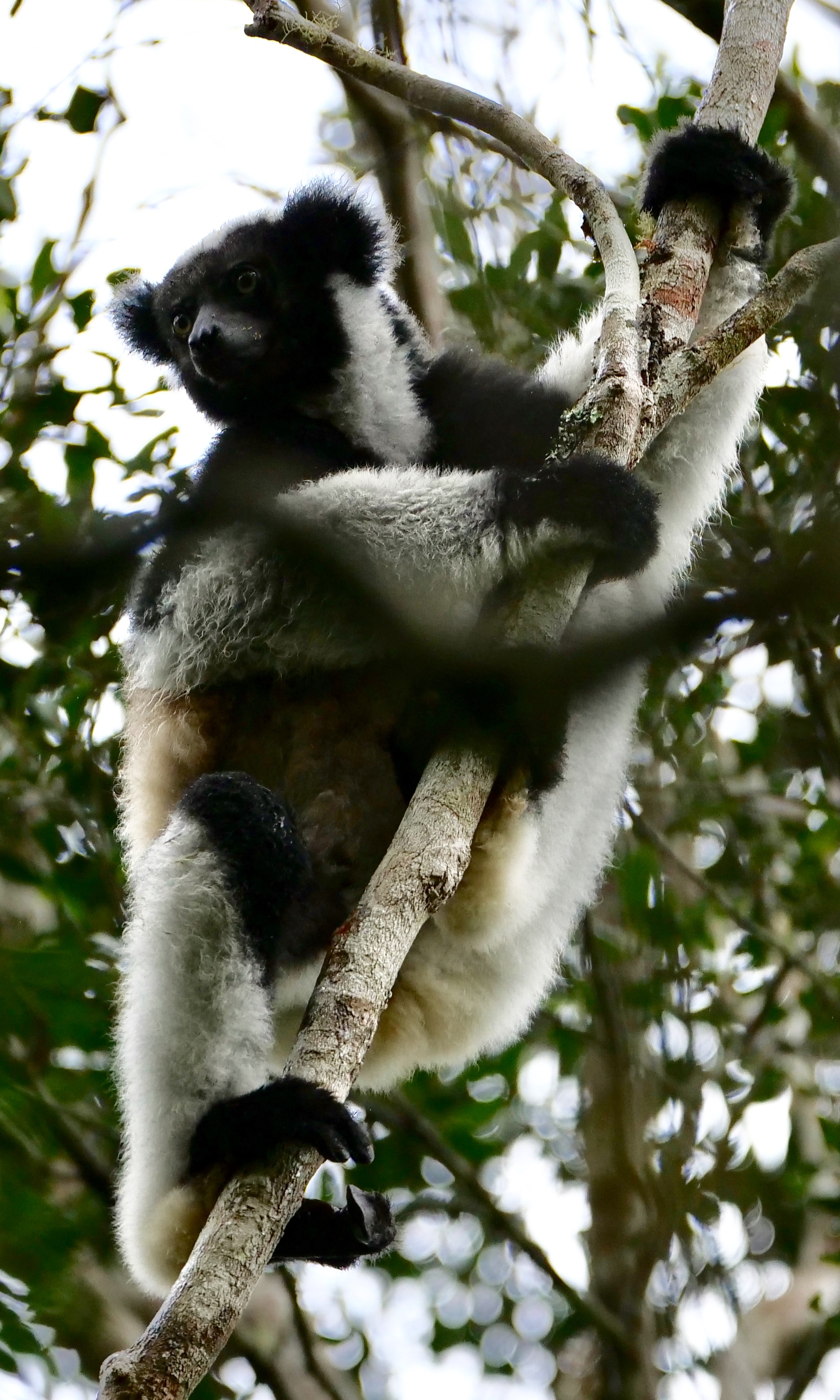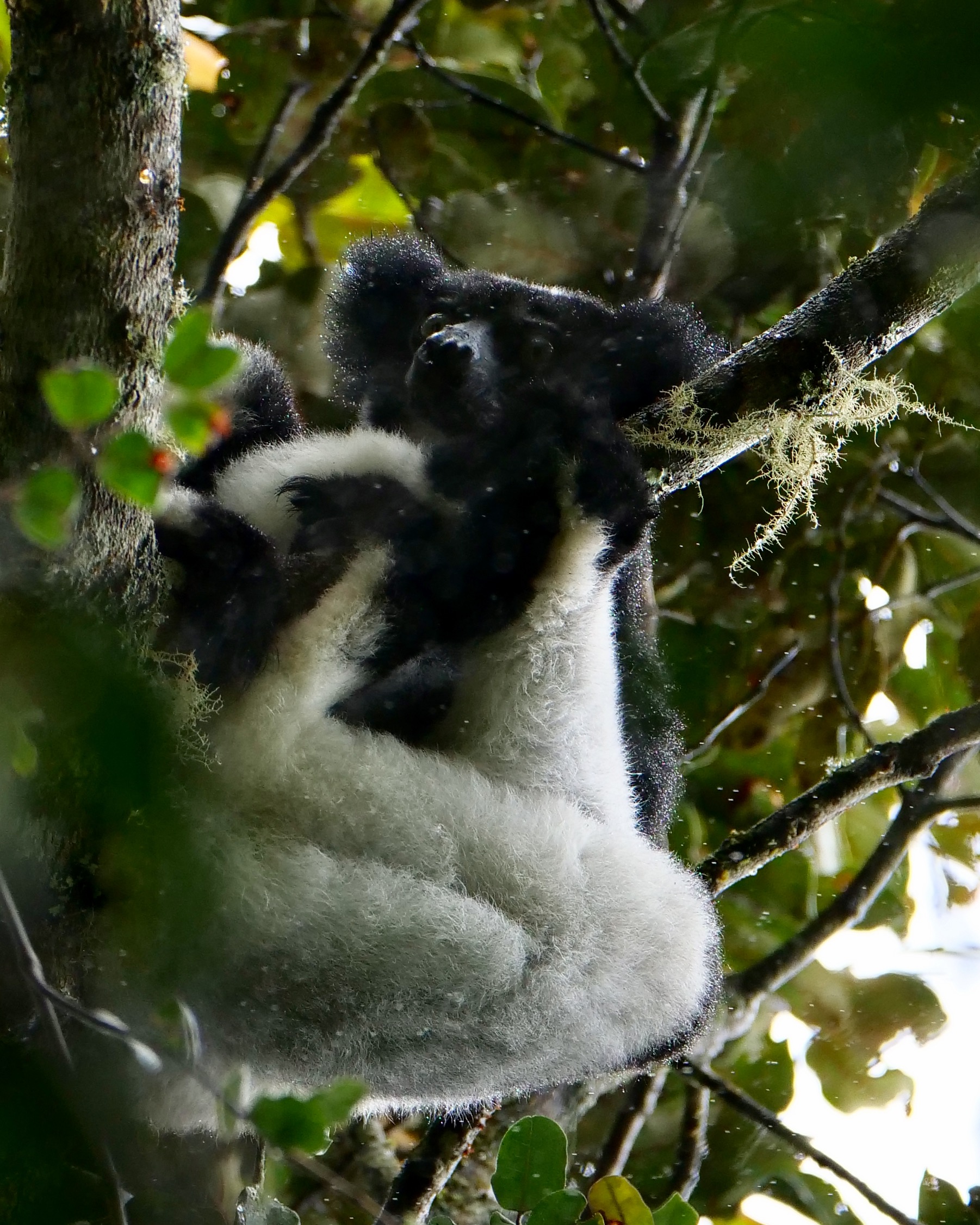The largest and loudest of living lemur species has to be heard to be believed!
Humpback whales are the oceans’ most prodigious “singers”; arguably, the Indri (Indri indri) is the grand champion “vocalist” among land mammals.
I took both photos around 10am on 21.05.2018 – a moderately wet morning (wet enough to be challenging, photographically) in Andasibe-Mantadia National Park.
Indri are traditionally regarded as sacred, but some humans still hunt and eat them.
Destruction of their eastern Madagascan rainforest habitat, however, is the real key to their “critically endangered” status – a status Indri share with not a few other lemurs.
As is true of other relatively large lemurs, Indri have a prodigious ability to “fly” from tree to tree; all the more remarkable, because – unlike the other large lemurs – Indri have only a stumpy, “vestigial” tail.

Females are dominant, as is generally true of lemurs.
Indri are monogamous and typically exist in small, family groups: mother, father, plus their offspring.
They do not survive long in captivity, and captive Indri have never bred; “species survival via zoos” is – apparently – an impossibility.
Their call is complex, incredibly haunting and astonishingly loud. Reportedly, it can be audible to humans, as far as 4 kilometres distant.
It is likely that within this present century humans and Indri will no longer be able to set eyes and ears on each other, directly.
Vicariously, you can see and hear Indri quite well in this video:
